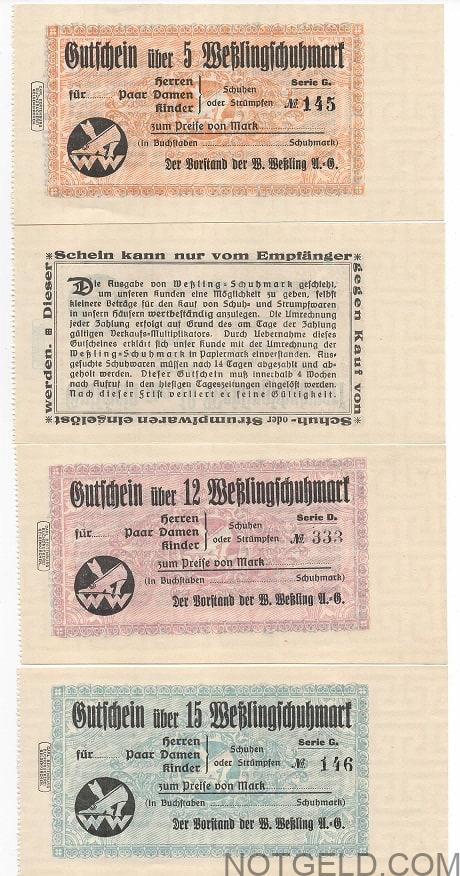Wertbestaendige notgeld……………notes of ‘fixed’ value
Wertbestaendige notgeld are those issues which have a ‘fixed’ value. Their face value is either in dollars US or ‘gold’ mark, or they are less commonly, for an actual ‘commodity’. Denominations, for these notes all issued in late 1923, were based on the old ‘4.2 mark to the dollar’ valuation of 1914. Despite the name ‘goldmark/goldpfennig’, these issues were NOT actually backed by gold…it was all a bit of a sham! But we see that notes in this fascinating notgeld category can have (and are based on) 4.20 goldmark = 1 U.S. dollar

Wertbestaendige notgeld are all dated at the end of 1923 and it appears that about 700 places issued them. Those with money values (about 85% of the issues) are either in US dollars and/or Goldmarks or Goldpfennigs. The note above is for a value of 6 goldmarks and was issued by ‘Hamburgische Frauenhilfe’. It is catalogued as LSK148, using the new 2002 Hamburg paper money issues catalogue, by Lindman, Stolzenberg & Kirstein.
The 3 notes below, issued in Hoechstadt a.d.Donau, are a beautiful and very colourful complete set. They go to show that this notgeld category is super for the notgeld collector. They have a total catalogue value of 120 euros (30+40+50 euros, respectively for the 3 different face values). No variants are known for these pieces.

The following scan shows 2 scarce wertbestaendige pieces of notgeld issued in Luebben with fairly high face values of 8.40 goldmarks and 21 goldmark. They catalogue under ‘L037’ in Kai Lindman’s new ‘Das wertbestaendige Notgeld von 1923/24’ catalogue, published in 2008. They have a catalogue value of either 150 or 200 euros in used condition!
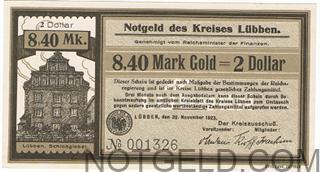
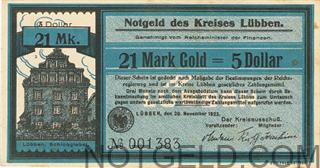
The following scan shows another scarce/rare piece, this time issued in Hoechst a. Main. The piece is dated ‘6 November 1923 and has a face value of 5Goldmark. It catalogues as ‘H052a’ in Kai Lindman’s ‘Das wertbestaendige Notgeld von 1923/24’ and catalogue value is 350 euros!
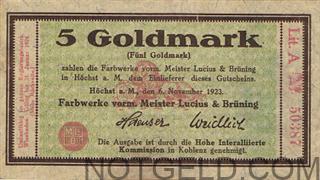
The following 4 notes, illustrated below, are made of velvet and leather and were issued in Bielefeld and Osterwieck. The leather notes, for 1 Goldmark were issued on different coloured leather. I have green, white, brown and red. All have similar fronts and backs as depicted by the 2 notes shown. I have been told that these Osterwieck notes are ‘Spenden- und Erinnerungsscheine’! That is, they are commemerative issues. You can see that the face-value for the Bielefeld pieces, issued on velvet, are ‘1 dollar or 4.2 goldmark’..the exchange rate of the mark to the US dollar back in 1914.
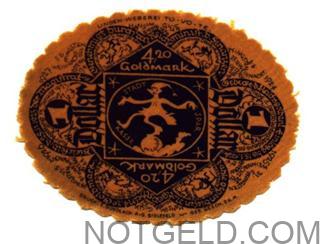

The idea behind linking the German currency to the Dollar was that it would hopefully make it more stable and help the German money to maintain a constant value.
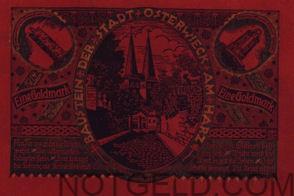
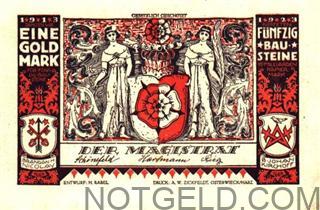
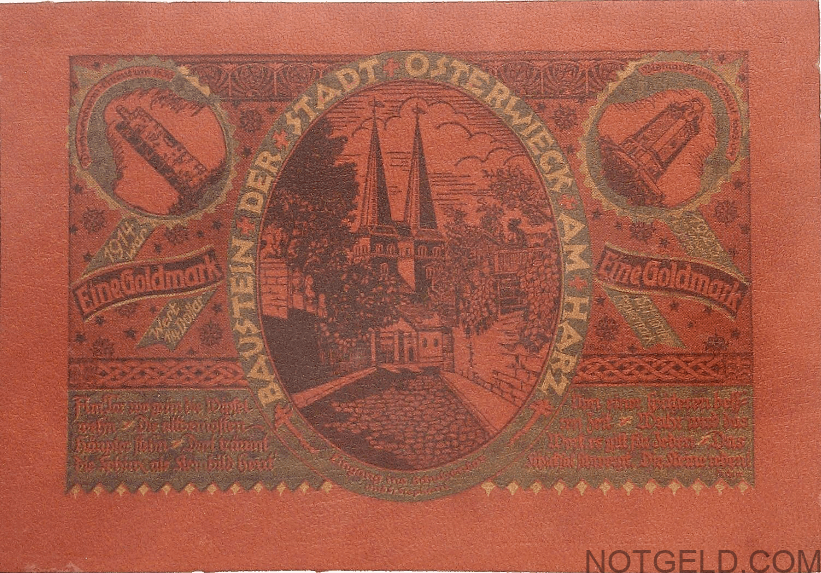
This scan nicely shows how the oval pieces were made. There was a card behind the sheet of velvet which was then punched out by machine.

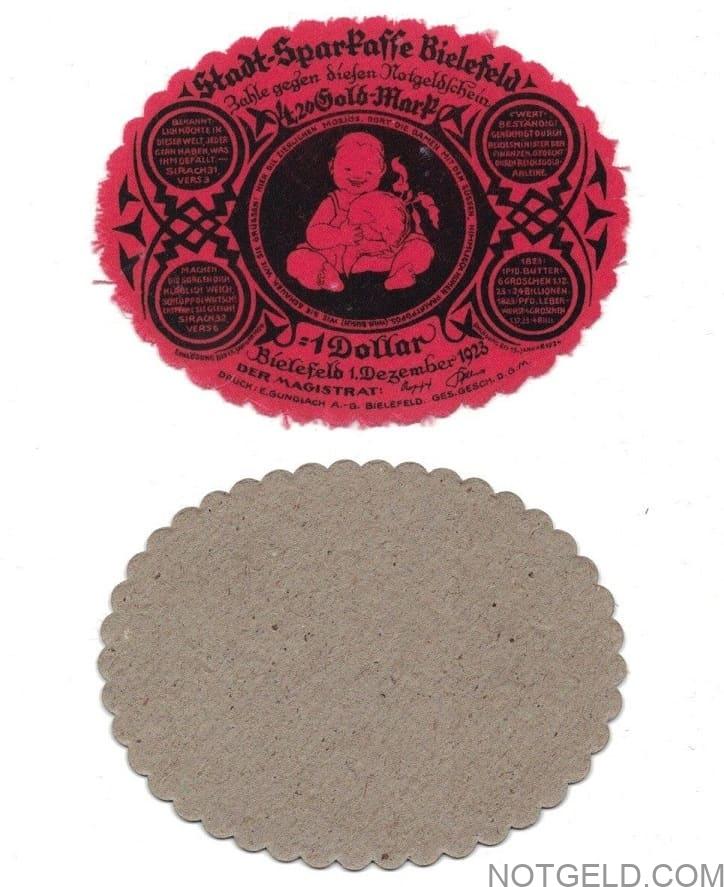
The following table may help you:
- 1 Goldpfennig = 1/420th of a dollar
- 4.2 Goldpfennig = 1/100th of a dollar
- 5 Goldpfennig = 5/420th of a dollar
- 10 Goldpfennig = 1/42th of a dollar
- 0.42 Goldmark = 1/10th of a dollar
- 0.84 Goldmark = 1/5th of a dollar
- 1.05 Goldmark = 1/4 of a dollar
- 1.60 Goldmark = 8/21 of a dollar (Overath)
- 2.10 Goldmark = 1/2 of a dollar
- 3.60 Goldmark = 6/7 of a dollar (Overath)
- 4.20 Goldmark = 1 dollar
- 9 Goldmark = 2 & 1/6 of a dollar (Overath)
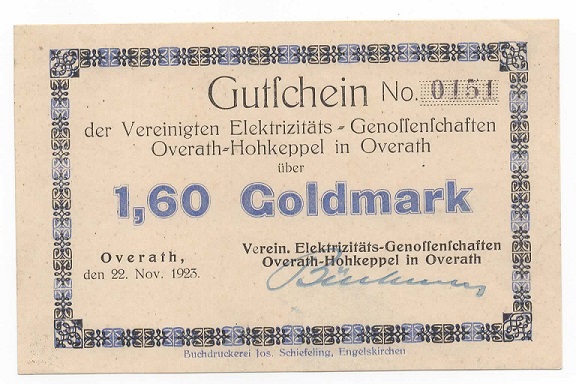
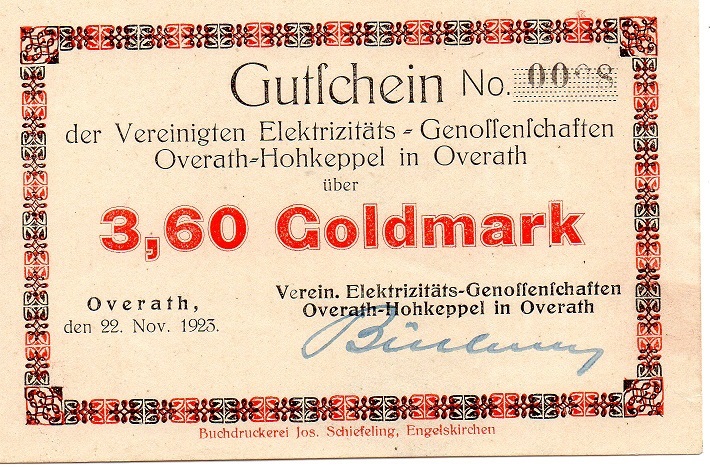
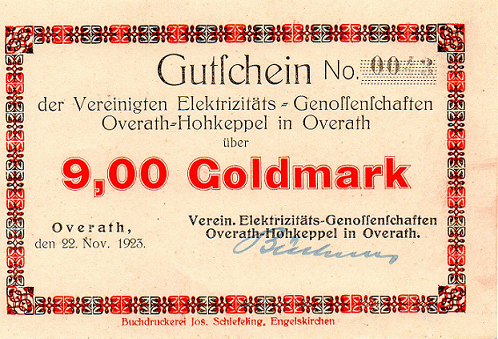
Bielefeld issued a note with a face value of exactly 1 Goldmark though:

The wertbestaendige notgeld issues that had a face value of an actual commodity, are highly desirable and highly collected. (Please see my other website article ‘*commodities’) As a good example, the note below is for honey!!
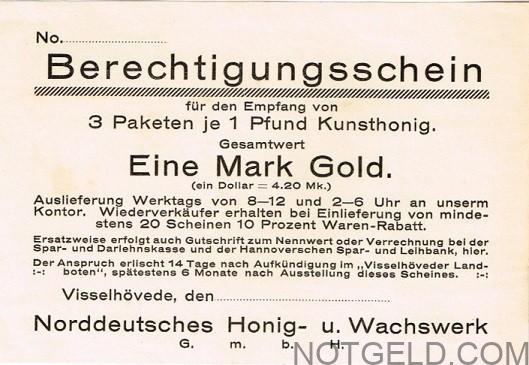
This very rare set of 4 wertbestaendige notgeld (below) was issued in Gelsenkirchen. These very, very unusual pieces, have had validity to get shoes and hosiery.
The owner of the notgeld, had the right to get shoes in all the Wessling A.G. company shops. These shops were situated in Gelsenkirchen, Bochum, Bernburg, Duisburg.
If the purchaser took the shoes, the notgeldschein was then destroyed. Therefore these notgeldscheine are very, very rare. The terms and conditions are printed on the back of the notgeld pieces:
“Dieser Schein kann nur vom Empfänger gegen Kauf von Schuhen oder Strumpfwaren eingelöst werden.” (“Strumpfwaren” means “hosiery.)
It was the single idea of Wessling AG to issue these notgeld linked to the shoes. Note the low serial numbers.
